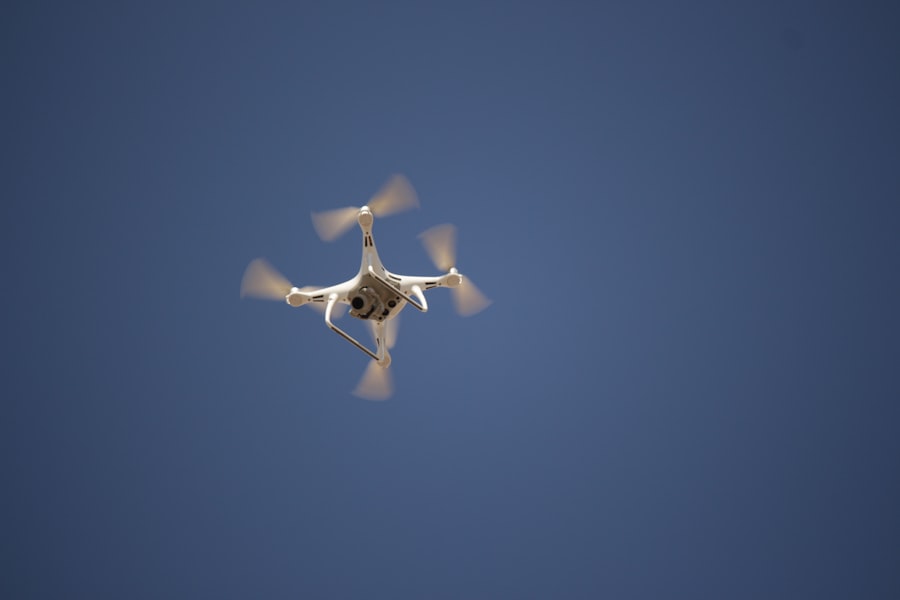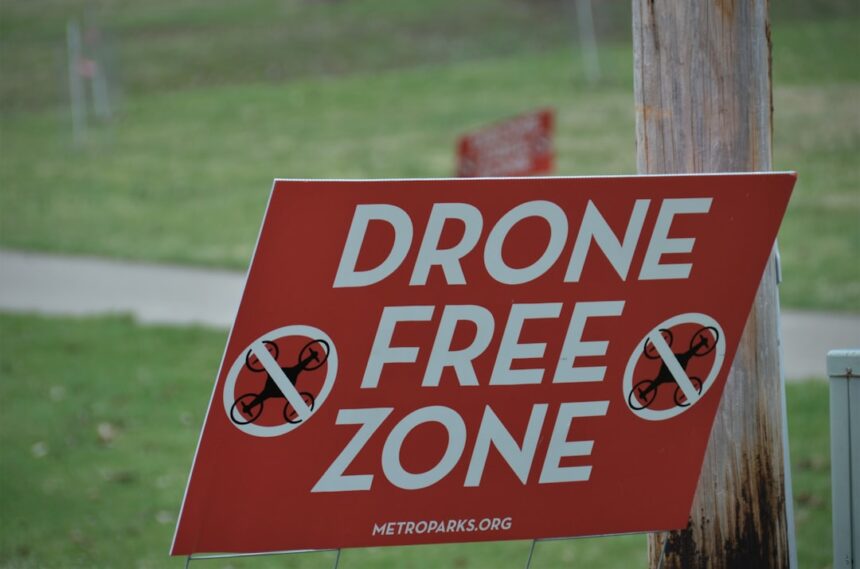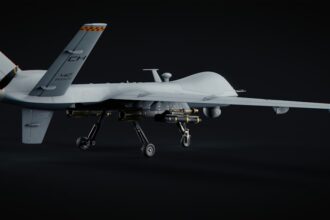In recent years, the landscape of warfare has undergone a significant transformation, largely due to the advent of First-Person View (FPV) drones. These unmanned aerial vehicles have emerged as a pivotal tool in modern military operations, reshaping how conflicts are conducted. Initially popularized by hobbyists and filmmakers, FPV drones have found their way into the arsenals of various military forces around the globe.
Their ability to provide real-time video feeds and maneuver with precision has made them invaluable in both reconnaissance and combat scenarios. As nations grapple with the complexities of modern warfare, the integration of FPV drones has become a defining characteristic of contemporary conflict. The rise of FPV drone warfare can be attributed to several factors, including advancements in technology, the need for cost-effective solutions, and the desire for reduced risk to personnel.
As military budgets tighten and the demand for effective surveillance and strike capabilities increases, FPV drones offer a compelling alternative to traditional manned aircraft. Their relatively low cost and ease of deployment allow for rapid response in dynamic combat environments. Moreover, the psychological impact of these drones on both combatants and civilians cannot be understated; their presence often instills fear and uncertainty, altering the dynamics of engagement on the battlefield.
Key Takeaways
- FPV drone warfare is on the rise in modern conflict, offering new capabilities and advantages to military operations.
- The use of FPV drones provides military forces with enhanced situational awareness, reconnaissance, and surveillance capabilities.
- FPV drones play a crucial role in intelligence gathering, providing real-time data and imagery for decision-making in military operations.
- FPV drones have significantly impacted targeted strikes, enabling precision and accuracy in hitting specific targets.
- The use of FPV drones in urban warfare presents both challenges and opportunities for military forces, requiring specialized training and tactics.
The Advantages of FPV Drones in Military Operations
FPV drones present a multitude of advantages that enhance military operations in various ways. One of the most significant benefits is their ability to provide real-time situational awareness. Equipped with high-definition cameras and advanced sensors, these drones can capture detailed imagery and video feeds from the battlefield, allowing commanders to make informed decisions based on current conditions.
This capability is particularly crucial in fast-paced combat scenarios where information is vital for success. The immediacy of data provided by FPV drones can mean the difference between victory and defeat. Additionally, FPV drones offer unparalleled maneuverability and versatility.
Unlike traditional aircraft, which may require extensive infrastructure for takeoff and landing, FPV drones can be deployed from virtually anywhere. This flexibility enables military units to operate in diverse environments, from rugged terrains to urban landscapes. Furthermore, their small size allows them to navigate through tight spaces and avoid detection, making them ideal for covert operations.
The combination of real-time intelligence and agile maneuvering positions FPV drones as a formidable asset in modern military strategy.
The Role of FPV Drones in Intelligence Gathering

Intelligence gathering has always been a cornerstone of military operations, and FPV drones have revolutionized this aspect of warfare. Their ability to conduct surveillance missions without putting personnel at risk has made them an essential tool for gathering actionable intelligence. By flying over enemy territory or conflict zones, these drones can collect vital information on troop movements, supply routes, and fortifications.
This data is crucial for planning operations and anticipating enemy actions, thereby enhancing overall mission effectiveness. Moreover, FPV drones can operate at various altitudes and speeds, allowing them to adapt to different reconnaissance needs. They can hover silently above a target area or fly at high speeds to cover large distances quickly.
This adaptability enables military forces to gather intelligence in real-time, providing commanders with up-to-date information that can influence tactical decisions on the ground. As conflicts become increasingly complex and fluid, the role of FPV drones in intelligence gathering will likely continue to expand, offering new avenues for strategic advantage.
The Impact of FPV Drones on Targeted Strikes
| Metrics | Data |
|---|---|
| Number of targeted strikes | 100 |
| Accuracy of strikes with FPV drones | 90% |
| Civilian casualties | 10 |
| Effectiveness of intelligence gathering | Improved |
The introduction of FPV drones has also transformed the nature of targeted strikes in modern warfare. These drones enable precision strikes with minimal collateral damage, a critical consideration in contemporary military engagements where civilian casualties can have far-reaching consequences. Equipped with advanced targeting systems, FPV drones can identify and engage specific targets with remarkable accuracy.
This capability allows military forces to neutralize threats while minimizing the risk to non-combatants. Furthermore, the psychological aspect of drone warfare cannot be overlooked. The presence of FPV drones in conflict zones often creates a sense of omnipresence for adversaries, who may feel constantly monitored and vulnerable to sudden strikes.
This psychological warfare can disrupt enemy operations and morale, leading to strategic advantages for those employing these technologies. As military forces continue to refine their use of FPV drones for targeted strikes, the implications for future conflicts are profound, potentially reshaping the rules of engagement.
The Use of FPV Drones in Urban Warfare
Urban warfare presents unique challenges that require innovative solutions, and FPV drones have emerged as a critical asset in navigating these complexities. In densely populated areas where traditional military tactics may be less effective, FPV drones provide a means to gather intelligence and conduct operations with precision. Their ability to fly low and maneuver through narrow streets allows them to scout enemy positions without exposing ground troops to unnecessary risk.
Additionally, FPV drones can facilitate communication and coordination among units operating in urban environments. By relaying real-time information about enemy movements or potential ambushes, these drones enhance situational awareness for ground forces. This capability is particularly valuable in urban settings where visibility is often limited and threats can emerge unexpectedly.
As urban warfare continues to evolve, the integration of FPV drones will likely play an increasingly prominent role in shaping tactics and strategies.
Training and Skillsets Required for FPV Drone Warfare

The effective use of FPV drones in military operations necessitates specialized training and skillsets among personnel. Operators must possess a deep understanding of drone technology, including flight mechanics, navigation systems, and payload management. Additionally, proficiency in interpreting real-time data feeds is essential for making informed decisions during missions.
As the complexity of drone warfare increases, so too does the need for comprehensive training programs that equip operators with the necessary skills. Moreover, teamwork and communication are critical components of successful drone operations. Operators must work closely with ground troops and command centers to ensure that intelligence gathered by drones is effectively integrated into broader operational strategies.
This collaborative approach requires not only technical expertise but also strong interpersonal skills to facilitate coordination among diverse units. As militaries adapt to the growing prominence of FPV drone warfare, investing in training programs that emphasize both technical proficiency and teamwork will be paramount.
Ethical and Legal Considerations of FPV Drone Warfare
The rise of FPV drone warfare raises significant ethical and legal considerations that warrant careful examination. One of the primary concerns revolves around accountability for actions taken by unmanned systems. In traditional warfare, clear lines of responsibility exist; however, the use of drones complicates this dynamic.
Questions arise regarding who is accountable for civilian casualties resulting from drone strikes or intelligence failures—operators, commanders, or manufacturers? Establishing clear legal frameworks that address these issues is essential to ensure accountability in drone warfare. Additionally, the ethical implications of using drones for targeted strikes must be scrutinized.
The ability to conduct remote strikes without direct engagement can desensitize operators to the consequences of their actions. This detachment raises moral questions about the nature of warfare and the value placed on human life. As militaries increasingly rely on drone technology, it is crucial to engage in ongoing discussions about the ethical implications of these practices and develop guidelines that prioritize humanitarian considerations.
Countermeasures Against FPV Drones in Conflict Zones
As FPV drones become more prevalent in military operations, adversaries are developing countermeasures to mitigate their effectiveness. These countermeasures range from electronic warfare tactics designed to disrupt drone communications to physical defenses aimed at intercepting or destroying incoming drones. The arms race between drone technology and counter-drone systems is intensifying as both sides seek to gain an advantage on the battlefield.
One common approach involves deploying jamming devices that interfere with a drone’s control signals or GPS navigation systems. By disrupting these signals, adversaries can render drones ineffective or force them to crash-land. Additionally, some military forces are investing in anti-drone technologies such as laser systems or projectiles specifically designed to target unmanned aerial vehicles.
As countermeasures evolve alongside drone technology, it becomes increasingly important for military strategists to anticipate potential threats and develop comprehensive strategies that address both offensive and defensive capabilities.
Future Developments and Innovations in FPV Drone Warfare
The future of FPV drone warfare is poised for significant advancements as technology continues to evolve at a rapid pace.
AI algorithms could enable autonomous decision-making processes, allowing drones to identify targets or navigate complex environments without direct human intervention.
This shift could revolutionize how military forces deploy and utilize drones on the battlefield. Moreover, advancements in battery technology may extend flight times and operational ranges for FPV drones, enabling them to conduct longer missions without needing frequent recharges or replacements. Additionally, improvements in sensor technology will likely enhance data collection capabilities, providing even more detailed intelligence for military planners.
As these developments unfold, they will undoubtedly shape the future landscape of drone warfare and influence how conflicts are conducted.
The Integration of FPV Drones with Other Military Technologies
The integration of FPV drones with other military technologies represents a significant trend in modern warfare. As militaries seek to create more cohesive operational frameworks, combining drone capabilities with existing systems enhances overall effectiveness on the battlefield. For instance, integrating FPV drones with ground-based sensors or satellite imagery can provide a comprehensive view of conflict zones, allowing commanders to make informed decisions based on multiple data sources.
Furthermore, collaboration between manned aircraft and unmanned systems is becoming increasingly common. Manned aircraft can provide support for drone operations by offering cover or coordinating strikes based on intelligence gathered by FPV drones. This synergy between different platforms enhances situational awareness and operational efficiency while maximizing the strengths of each system involved.
The Global Implications of FPV Drone Warfare in Modern Conflict
The proliferation of FPV drone technology has far-reaching global implications that extend beyond individual conflicts. As more nations adopt these capabilities, there is potential for an arms race centered around drone technology and countermeasures. Countries may feel compelled to invest heavily in their own drone programs to maintain parity with adversaries or gain strategic advantages on the global stage.
Moreover, the accessibility of drone technology raises concerns about non-state actors gaining access to advanced capabilities previously reserved for nation-states. This democratization of drone warfare could lead to increased instability in regions already plagued by conflict as various groups leverage these technologies for their own purposes. As nations navigate this evolving landscape, international cooperation will be essential in establishing norms and regulations governing the use of FPV drones in warfare to mitigate potential risks associated with their proliferation.
With their numerous advantages in military operations—from intelligence gathering to targeted strikes—FPV drones have become indispensable tools for contemporary armed forces. However, as this technology continues to evolve, it brings forth ethical dilemmas and legal challenges that must be addressed thoughtfully by policymakers and military leaders alike.
The future landscape of warfare will undoubtedly be shaped by ongoing innovations in drone technology and its integration with other military systems as nations adapt to this new reality on the battlefield.
In recent years, the use of FPV (First Person View) drones has significantly transformed modern warfare, offering new tactical advantages and challenges on the battlefield. These drones provide real-time video feeds to operators, allowing for precise targeting and reconnaissance in complex environments. An insightful article discussing the implications of FPV drone warfare in contemporary conflicts can be found on In The War Room. This piece delves into the strategic shifts and technological advancements that FPV drones bring to military operations, highlighting their growing importance in modern conflict scenarios.
FAQs
What is FPV drone warfare?
FPV (First Person View) drone warfare refers to the use of unmanned aerial vehicles (UAVs) equipped with cameras and other sensors to conduct military operations. Operators control the drones from a remote location, using live video feeds to navigate and engage targets.
How are FPV drones used in modern conflict?
FPV drones are used in modern conflict for a variety of purposes, including reconnaissance, surveillance, target acquisition, and precision strikes. They provide military forces with real-time intelligence and the ability to engage enemy targets with minimal risk to personnel.
What are the advantages of using FPV drones in warfare?
The use of FPV drones in warfare offers several advantages, including the ability to gather intelligence without putting personnel in harm’s way, conduct precision strikes with reduced collateral damage, and maintain a persistent presence over a target area for extended periods of time.
What are the challenges and risks associated with FPV drone warfare?
Challenges and risks associated with FPV drone warfare include the potential for technological malfunctions or hacking, the need for skilled operators and maintenance personnel, and the ethical considerations surrounding the use of unmanned systems in combat.
How is FPV drone warfare regulated by international law?
FPV drone warfare is regulated by international law, including the principles of distinction, proportionality, and military necessity. Additionally, the use of armed drones is subject to the laws of armed conflict, which govern the conduct of hostilities and the protection of civilians and non-combatants.




